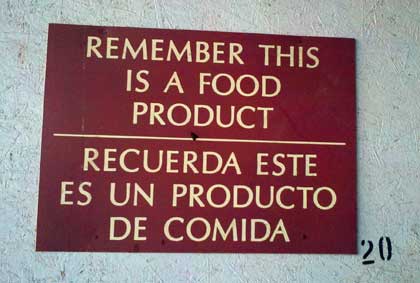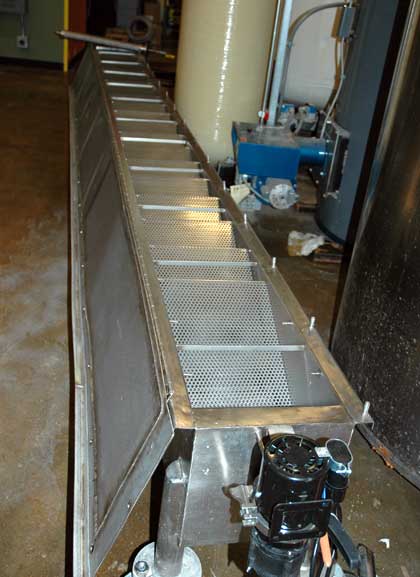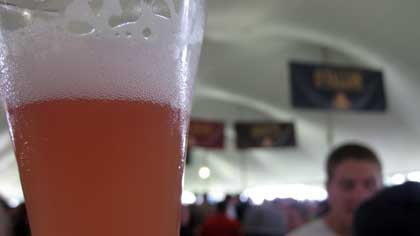
This sign hangs (on several walls) at the Segal Hop Ranch in Grandview, Washington (Yakima Valley).

This sign hangs (on several walls) at the Segal Hop Ranch in Grandview, Washington (Yakima Valley).

Think you know where in the beer world this photo was taken?
Please leave your answer as a comment.

Just how much longer until Hibiscus Wit is declared an official World Beer Style?
MateVeza Morpho Herbal Ale is the latest yerba mate beer from MateVeza and pours a distinct shade of pink. I’m wondering if Hamburger Mary’s in Chicago will bring its Hibiscus Wit to the Great American Beer Festival next week. There are several others breweries that use a measure of hibiscus in the recipe, although it’s hard to imagine any of their beers during out pinker than 2nd Shift Hibiscus Wit (pictured above as it was poured at the St. Louis Brewers Heritage Festival in June).
Hibiscus adds a nice herbal note to a wit beer, at least when its used well. But it’s the color that could make hibiscus beers the next Blue Moon White Pink.
And of course I’ll be hoping this paves the way for purple beers.

Notice a trend here?
In 1911, exactly one hundred years ago, world consumption of hops was 0.63 pounds per hectoliter (0.54 per barrel), amounting to 12.6 grams of alpha per hectoliter.
The best comparison going forward is grams of alpha per hectoliter, rather than bulk, because of the advent of high alpha hops and the use of pellets and extracts.
In the early 1970s — when about one-third of hops were processed, compared to nearly 90 percent today — the rate was 9 grams per hectoliter.
Here’s how it has progressed since:
1979 – 8 grams
1989 – 7 grams
1997 – 6 grams
2011 – 4.1 grams
Source: Barth Report, from the Barth Haas Group
The latest Gallup Poll screams the news from the mountain tops. DRINKERS PREFERENCE FOR BEER FALLS 5%.
And, as in 2005, wine gains. So now 36% of drinkers prefer beer (that will be down to 1% in seven years if beer continues to lose 5% per year) and 35% favor wine. Lots of numbers that people who sell wine must love (look at the preferences of college graduates). Then, of course, there is the last paragraph.
While meaningful, this year’s shifts are not much different in magnitude from those seen in 2005 – changes that proved temporary. Whether beer continues to lose ground to other forms of liquor or rebounds may depend on the future direction of young adults’ drink preferences.
Maybe this will turn out to be a big deal and maybe it won’t. Certainly anybody running a brewery, particularly one with shrinking sales, should be bothered if it turns out that younger drinkers are abandoning beer for wine.
But what Gallup apparently missed when it formulated the questions — at least the ones we’re seeing the answers for — is that there’s beer and there’s beer.